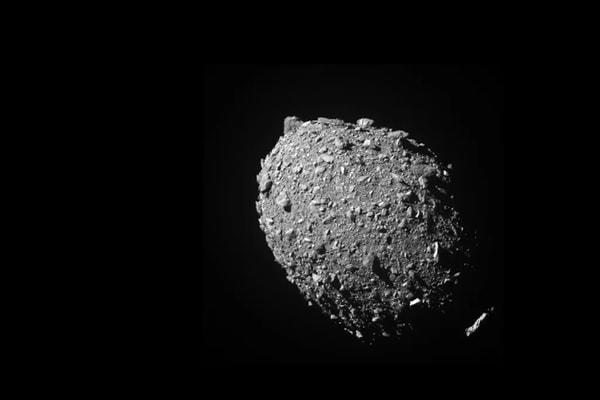NASA Confirms DART Mission Successfully Alters Path of Asteroid
Have you ever seen a movie where an asteroid is heading towards Earth? and thought to yourself, 'What if this exact scenario happens in real life?' Well, NASA has some exciting news to share.

On Tuesday, the National Aeronautics and Space Administration confirmed the successful redirection of an incoming asteroid's path by ramming the Double Asteroid Redirection Test (DART) spacecraft into the massive space rock.
'Analysis of data obtained over the past two weeks by NASA’s Double Asteroid Redirection Test (DART) investigation team shows the spacecraft's kinetic impact with its target asteroid, Dimorphos, successfully altered the asteroid’s orbit,' said the space agency.
According to NASA Chief Bill Nelson, the DART spacecraft struck the massive asteroid Dimorphos on September 26, sending it into a smaller and faster orbit just around Didymos, its brother asteroid.

These sibling asteroids revolve around the sun every 2.1 years and present no actual danger to planet Earth, but they do provide an excellent test of the kinetic impact method of planetary defense in the event that an actual impending obstacle is ever spotted.
The DART mission's success proved to be an act reminiscent of non-fiction films such as 'Deep Impact' and “Armageddon”, in which they alter the trajectory of an extinction-level asteroid heading towards Earth.
Dimorphos, the mission's target, was a small space rock just over 152.4 meters wide. It was and shall continue to be harmless, posing no danger to planet Earth. The target asteroid orbited a larger asteroid called Didymos every 11 hours and 55 minutes prior to the DART spacecraft impact.
An in-flight camera caught images of the rapidly accelerating asteroid on the day of the crash. As the spacecraft approached, the asteroid's outer layer filled the camera, with rock formations coming into focus well before communication was cut off. The spacecraft's camera and the surface it was depicting had collided.
“If an Earth-threatening asteroid was discovered and we could see it far enough away, this technique could be used to deflect it,” Nelson said.

The success of the DART mission increased the space agency team's confidence in protecting Earth from any potential incoming asteroids that could be life-threatening.
“It’s exciting that we’ve taken this first step to develop and now to successfully demonstrate asteroid deflection,” said DART coordination lead Nancy Chabot at the Johns Hopkins Applied Physics Laboratory. The team was happy with the initial results, she continued, “even though there’s still a lot of work to do.”
The other space observatories such as the James Webb and Hubble Space Telescopes, assisted in determining how successfully the DART spacecraft fended Dimorphos off course. Scientists were aided in assessing the asteroid's orbital change by two types of data from Earth.
Keşfet ile ziyaret ettiğin tüm kategorileri tek akışta gör!


Send Comment